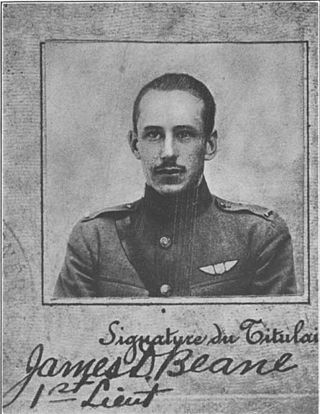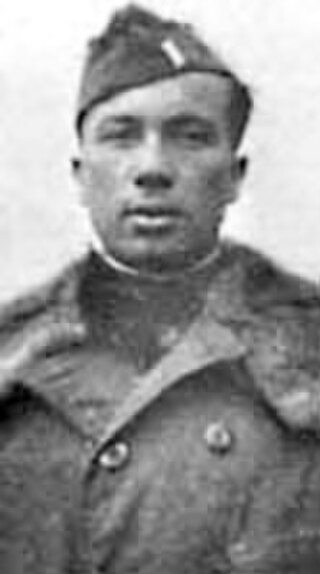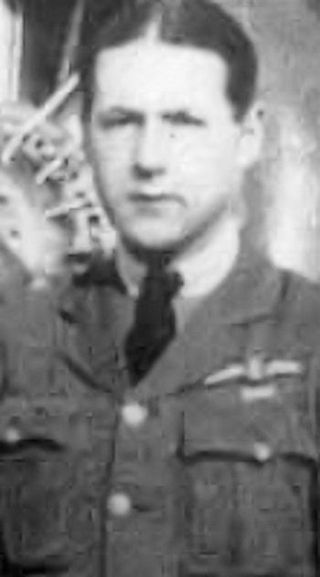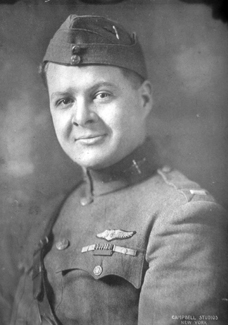
Oliver Colin LeBoutillier was an American aviator and flying ace. Serving with the British Royal Naval Air Service and Royal Air Force in the First World War, LeBoutillier scored 10 aerial victories, witnessed the death of Manfred von Richthofen and was a vigorous proponent of Captain Roy Brown as the victor over Richthofen. Post war, he became a stunt pilot for movies, a skywriter, and an aviation instructor whose most famous student was Amelia Earhart. Later, he became a civil aviation inspector.

Major David McKelvey Peterson was a 1915 Lehigh University graduate who became a World War I flying ace. He achieved six aerial victories, one of which was earned in the Lafayette Escadrille; five were officially credited during his tenure with the United States Army Air Service.

Lieutenant Harold Koch Boysen was a World War I flying ace credited with five aerial victories.

Lieutenant George Willard Furlow (1893–1959) was a World War I flying ace credited with five aerial victories.

Lieutenant James Knowles Jr. (1896–1971) was a World War I flying ace credited with five aerial victories. He was one of the final aces in the war.

Lieutenant William Dolley Tipton began his military career as a World War I Sopwith Camel pilot. The U.S. Air Force officially credits him with four aerial victories during the war, although other sources claim he had five, and thus was a flying ace. He was one of the founding officers of what would become the Maryland Air National Guard. As a member of the Maryland National Guard, he was mobilized during World War II. He rose to the rank of colonel during the war. He died on December 12, 1945, in an aircraft accident. Tipton Airport in Anne Arundel County, Maryland, is named in his honor.

Lieutenant James Dudley Beane was a World War I flying ace credited with six aerial victories.

Lieutenant Murray Kenneth Guthrie was a World War I flying ace credited with six aerial victories.

Lieutenant John Knox MacArthur was an American World War I flying ace credited with six aerial victories. He was his squadron's first ace.

Lieutenant William Thomas Ponder was an American World War I flying ace credited with six aerial victories.

Captain Gorman DeFreest Larner was a World War I flying ace credited with seven aerial victories.

Lieutenant Wilbert Wallace White was an American World War I flying ace credited with eight aerial victories. He was recommended for the Medal of Honor for his self-sacrifice.

Brigadier General Martinus Stenseth began his career in the Minnesota National Guard in June 1916, before the United States entered World War I. He remained in the military as a professional soldier, rising to the rank of brigadier general.

Captain Harold Albert Kullberg was a World War I flying ace credited with 19 aerial victories. Though he scored his victories with the Royal Air Force, Kullberg was an American citizen. He was rejected for training as an American pilot because he was too short. He then joined the Royal Flying Corps in Canada on 7 August 1917.

Lieutenant Frank Leaman Baylies was an American World War I flying ace credited with twelve aerial victories while flying in the French Aeronautique Militaire. Having originally volunteered for the Ambulance Corps, Baylies transferred into French aviation in May 1917. After scoring his 12 victories with the French, he transferred into American aviation service but remained with the French until his death in action.

Captain James William Pearson was an American World War I flying ace credited with twelve aerial victories while flying for the British Royal Air Force.

Lieutenant William Portwood Erwin was an American World War I flying ace credited with eight aerial victories. On 19 August 1927, he disappeared during the Dole Air Race from Oakland, California to Hawaii.

Lieutenant Kenneth Russell Unger was an American World War I flying ace credited with fourteen aerial victories. His candidacy rejected by his own nation, Unger applied to the British Royal Flying Corps for military pilot training in June 1917. Once trained, he was assigned to the Royal Naval Air Service (RNAS). As the RNAS was merged into the Royal Air Force, Unger scored his aerial victories between 26 June and 1 November 1918. In later life, Unger remained involved in aviation and served again during World War II. He also joined the U.S. Navy Reserves, rising to the rank of rear admiral.

Paul Frank Baer was an American fighter pilot for the United States Army Air Service in World War I. He was credited with nine confirmed victories and seven unconfirmed victory claims, making him the first flying ace in American military aviation history.

Captain Thomas Gantz Cassady was an American fighter pilot who served in both World Wars, and became a businessman during peacetime.




















